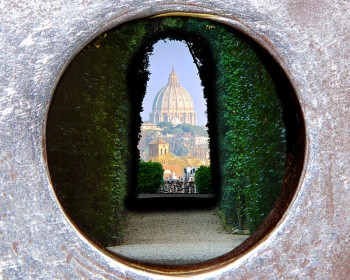Today, you may enjoy the fictional version of this Italo-Spanish noble family’s stories on Netflix by watching seasons of “The Borgias” starring Jeremy Irons but we thought you might love to learn more about the real-life contribution to history of the Borgia Family and how it includes one of the most scandalous Popes in the Vatican’s history.
Rising to power during 15th and 16th centuries, this historically scandalous family was deeply involved in the political as well as religious landscape so much so it produced two Popes: Pope Callixtus III and Pope Alexander VI.
Rodrigo Borgia, known as Pope Alexander VI, was to become one of the most scandalous Popes in Vatican history. Before being elected Pope in 1492, while being a cardinal, he had 4 children with Vannozza de Cattanei during their illicit relationship.
As Pope, Alexander VI employed his diplomatic skills and political savvy to enrich the Borgia family directly and overspend the Vatican’s resources. Favoring his family through nepotism, The Borgia Pope appointed Giovanni Borgia as captain of the Papal Army and choose Cesare Borgia, as cardinal. As for his other children with Vannozza de Cattanei, he decided to marry them into wealthy and powerful families in a perfect play for power.
Out of his established power plays, by far the most intriguing was the choice to marry the 13-year-old Lucrezia Borgia into the Sforza family who at the time ruled Milan.
However, when the Sforza family became useless to his quest for power, The Borgia Pope proceeded to have the marriage annulled by having Lucrezia declare it had never been consummated and forcing Giovanni Sforza to declare he was impotent. This lead her soon to be ex-husband to imply incest, as he powerfully stated the Pope and Cesare merely wanted Lucrezia all to themselves.
During the reign of his father as Pope the then cardinal Cesare Borgia held the infamous Banquet of Chestnuts at the Vatican Palace. Italian Renaissance chroniclers, such as Johann Burchard, reported The Pope had 50 courtesans in attendance to entertain the guests and that his children, Cesare and Lucrezia, were also present at the party that included rumored orgies. Despite these rumors and his self-confessed immorality, the Borgia Pope was considered one of the most excellent Popes since Saint Peter by his successors Sixtus V and Urban VIII.
Although infamous for their immorality, which included simony, murder and adultery to name a few, the Borgias were lovers of Art. It’s notable that if it weren’t for Cesare Borgia, the Mona Lisa might have never been created by Leonardo da Vinci who started painting it in 1503 while still under the cardinal’s employ. To support Leonardo, Cesare gave him a passport that ordered all who were shown to obey Leonardo’s demands. The Mona Lisa we see today was made possible by Cesare Borgia’s allowance of perfect creative freedom to Leonardo.
Although he passed away before its completion, it was Pope Alexander VI who persuaded Bramante, with whom he had very close ties, to join Michelangelo in working together on the new Saint Peter’s Basilica.
The Borgia family’s constant descent into sin was one of their most powerful characteristics and eventually led to their heritage being set aside by the Vatican as well as Rome through time. The frescoes masterfully painted by Pinturicchio and commissioned by the Borgia Pope himself to decorate his apartments were covered by black paint and hidden from viewers once the family lost prestige. The once-banned and neglected rooms of the sumptuous Vatican Borgia Apartments, displaying the frescoes painted by Pinturicchio, have nowadays been turned into galleries that host the modern art collection. This is perhaps fitting as The Borgias also played an important part in Italy’s history as patrons of the Arts who greatly contributed to the Renaissance.
Offering a glimpse into the historical impact the Borgia family had not only on the Vatican but on the Italian Renaissance art heritage as well, The Vatican Museums’ Borgia Apartments are well worth being explored.







